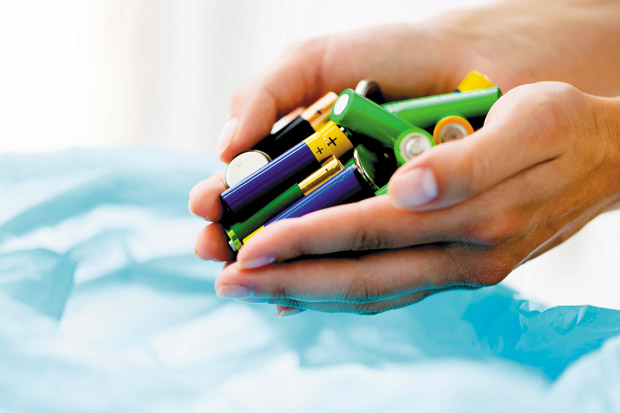How to simply ‘charge up’ your recycling habits
Americans generate about 254 million tons of trash annually, according to the Environmental Protection Agency’s (EPA) most recent figures, and only about one-third of that waste is recycled. For many, one of the main barriers to recycling is not knowing how or where to recycle certain items.
For instance , many household cordless products we use every day are powered by rechargeable batteries. These batteries are not only recyclable, but contain materials that are potentially harmful to the environment if thrown in the trash.
You can be part of the solution to reduce waste by learning how to properly recycle the products you use every day by incorporating the following into your recycling routine.
Check household “recyclable” items.
Aluminum cans and plastic bottles are the most commonly recycled items, but lots of other items found around the house can be recycled, as well. Start recycling plastic bags and paper towels right in your curbside bin. Pin a sign in the kitchen to remind kids they can throw napkins and sandwich baggies in, too.
Dump your stash.
Are you a battery hoarder? You aren’t alone.
A study commissioned by Call2Recycle, Inc. found that an estimated 6.7 billion batteries were sold into U.S. markets in 2014. Of that number, 30 percent were rechargeable batteries available to be recycled. Call2Recycle makes it easy to be a responsible battery user with its network of more than 30,000 drop-off locations. Find a battery collection site near you by visiting call2recycle.org/ locator.
Buy recycled products.
Checking the labels for products that are recycled and eco-friendly when making a purchase is the easiest way to be a responsible consumer.
Participate in a local community-recycling event — or create your own.
Host your own battery-specific recycling drive and invite your community to contribute their battery “hoards.” Your neighbors will thank you.
These eco-friendly activities are simple and easy to incorporate and can help you lead a greener lifestyle. When recycled, valuable materials can be recovered and used in new stainless steel products, such as golf clubs, batteries and other products.
This article is courtesy of Brandpoint.
